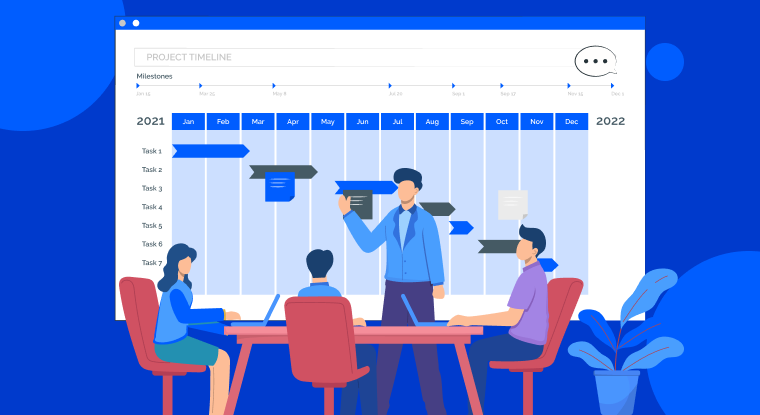| Project Management is a dynamic field that demands effective planning, organization, and execution. Among the plethora of tools available for project managers, Gantt charts have emerged as a popular choice. Developed by Henry L. Gantt in the early 20th century, Gantt charts provide a visual representation of project tasks and their timelines. While these charts offer several benefits, they also come with certain drawbacks. This article delves into The Benefits and Drawbacks of using a Gantt chart in Project Management.
Before we begin, you can unlock a free trial with iconicCRM right away to make the best of project management in one platform.
Pros:
- Visual Clarity: Gantt charts provide a clear visual representation of project timelines, making it easy for stakeholders to understand the project’s progress at a glance. This visual clarity enhances communication and coordination among team members.
- Task Dependency Management: Gantt charts allow project managers to define dependencies between tasks. This feature helps in understanding the sequential order of tasks and ensures that the project progresses smoothly without bottlenecks.
- Resource Allocation: Efficient resource management is crucial for project success. Gantt charts facilitate resource allocation by providing a comprehensive view of each team member’s workload. Project managers can make informed decisions about resource distribution and prevent burnout.
- Timeline Adjustments: Projects rarely go exactly as planned. Gantt charts make it easy to adjust timelines and tasks in response to changes, allowing for a more adaptive project management approach.
- Progress Tracking: Tracking progress is simplified with Gantt charts. Team members can update their task statuses, and project managers can instantly see which tasks are on schedule, delayed, or completed. This real-time tracking improves accountability and decision-making.
- Client and Stakeholder Communication: Gantt charts serve as effective communication tools for project managers to share progress with clients and stakeholders. The visual representation helps non-technical stakeholders grasp the project’s status without delving into detailed project documentation.
 Cons: Cons:
- Complexity for Large Projects: While Gantt charts excel in visualizing simple and moderately complex projects, they can become overwhelming for large and intricate projects. Managing a multitude of tasks and dependencies in a single chart may lead to confusion.
- Dependency Overemphasis: Overemphasis on task dependencies may lead to a rigid project structure. Projects often encounter unforeseen challenges, and an overly strict adherence to dependencies might hinder adaptability and creativity in problem-solving.
- Time-Consuming Updates: Keeping Gantt charts up to date can be time-consuming, especially when project tasks are frequently adjusted or added. Project managers may find themselves spending a significant amount of time on chart maintenance rather than strategic planning.
- Learning Curve: Gantt charts require a certain level of proficiency to use effectively. Team members who are unfamiliar with the chart may need training, and this learning curve can delay the initial implementation of the project management tool.
- Lack of Detail: Gantt charts provide a high-level overview, but they may lack the detail needed for in-depth analysis. For complex projects, supplementary tools and documentation may be necessary for a comprehensive understanding.
- Static Nature: Gantt charts are often static, and real-time collaboration can be limited. In rapidly changing project environments, a more dynamic project management approach may be required.
Conclusion:
Gantt charts have proven to be valuable tools in project management, offering visual clarity, resource management, and effective communication. However, their effectiveness depends on the nature and size of the project, as well as the adaptability of the team. To harness the benefits of Gantt charts, project managers should be mindful of their limitations and supplement them with additional project management methodologies and tools when necessary. The key lies in striking a balance between structure and flexibility to ensure successful project delivery.
Is this article The Benefits and Drawbacks of Using a Gantt chart in Project Management helpful? |












